Processes come to life through workflows. But sometimes, those processes are so intricate or have such a large scale that managing them is not a piece of cake.
Other times project managers lack experience in seeing through an ocean of tasks. They feel confused about what teams must do next and block or rash into making the least favorable decisions.
And that’s why managing processes—and projects—is critical and pretty challenging at the same time! Fortunately, you can rely on workflow management to avoid absolute chaos.
This blog is our share of contribution to your journey of workflow management. You’ll learn what’s workflow management, the tools you need, and the templates to create custom workflows of your very own.
Let’s get rolling!
What is Workflow Management?
Workflow management is the process of creating and optimizing workflows and it assists in coordinating work with the ultimate purpose of boosting the efficiency of teams.
Now, a workflow represents a process (or a part of a process), which is a sequence of tasks. And those tasks are performed by one or more roles to produce output and thus achieve a goal, such as reaching a project milestone.
Visually, workflow management looks like a diagram or a flowchart in terms of a project management method. But here’s an excerpt from a concise textual description of a workflow:
- Process: employee recruitment
- Goal: hire employees that fit a specific need
- Tasks: Create a job description, source talent, track applicants, interview
After creating workflows, we recommend you implement them with the support of workflow management software. Various types of project management software help automate workflows and consequently manage them more easily.
And that’s what enables you to monitor the performance of your business processes. But don’t get this wrong: Workflow management and business process management aren’t the same. This is the difference between workflows and business processes:
- Workflow management is a subset of business process management. It organizes people’s behavior by laying out instructions they must follow to execute tasks.
- Business process management is a higher-level approach for orchestrating a company’s business processes to improve operational efficiency.
Types of Workflow Management
Workflows belong to one of these categories:
Sequential workflows
As the name suggests, a sequential workflow is a diagram with a sequence of tasks. And the process moves forward from one task to the next. The distinctive feature of this workflow, though, is task dependency. This means that the process doesn’t change from one task to the next before the current task is completed. So, there’s no back and forth.
EXAMPLE OF THIS WORKFLOW
Consider production-line manufacturing processes because they don’t allow the product to return to previous stations. It works like a one-way river.
State machine workflows
Contrarily to sequential workflows, state machine workflows can flow back and forth. They revolve around the concept of “state” instead of “task.” In other words, the process moves from one state to another, not from one task to the next. They’re event-driven processes, which means they advance to a state when something—not necessarily task completion—happens.
EXAMPLE OF THIS WORKFLOW
Think of a social media workflow. It contains content review tasks whose outcome might be sending content pieces back to authors for changes. Another example is an agile workflow. For instance, a Scrum-based software development project requires acceptance of the product by the user at a certain point. And that might prevent the process from moving forward at that point.
Rules-driven workflows
Like a sequential process, this workflow mixes it with a set of rules that dictate the process’s execution, et voilà! You created a rules-driven workflow management system.
These rules are “if, then” conditions, which have the potential to be automated workflows. They express alternatives that configure the process’s flow. Therefore, the process advances based not only on completing tasks but also on selecting alternatives.
EXAMPLE OF THIS WORKFLOW
Think of it as you would make a dish at a food truck, considering that the customer may choose the meat, sauce, and topping they want.
Find a few workflow examples in this blog and see which best workflow management tools might work best for you!
Why is Workflow Management Important?
You already know that workflow management raises the efficiency of teams. But if we were to breakdown the perks of managing workflows, this would be our list:
Streamlined processes
By representing—or modeling—processes with workflows, you become able to spot:
- Unnecessary tasks that you must discard
- Repeatable tasks that you must boil down to a single task
Otherwise, they’ll waste your team’s time and effort and ultimately your productivity.
That’s why you cannot afford to have the unnecessary back and forth creating repetitive processes. Workflow management is best when you streamline the process or implement workflow automation.
Reduced manual work and human error
With manual processes, especially those kept in a spreadsheet, everything is constantly being updated with a lot of room for error or duplicate entries. Proper workflow management thrives by avoiding time wasters!
The best workflow management process is solved with automated workflows. Instead of using spreadsheets, automatically stay on top of your teams’ tasks through workflow automation triggers to assign a person, change the priority, or leave a comment—cutting out your manual processes.
Better transparency and accountability
If there’s one thing that workflow management software brings to the table is a whole bunch of process data. And that’s terrific for you to know the status of your teams’ tasks so you see who’s behind, on pace, or who will work on what next in your workflow.
With the process data above, the manager is able to check the progress of their team’s work. And with that information, the manager can identify any possible roadblocks in the workflow.
Also, because each task has assignees, your workflow management system enables the project manager to hold every team member accountable for their deliverables.

Effective communication
With visibility over everyone’s work, team members understand each other’s concerns better and faster. And that’s a massive step toward effective communication and workflow management.
Plus, team members don’t feel anxious about what they’re supposed to do next when they can see it in a project management tool. Keep your team from guessing about the following tasks or bugs to address. Task assignments are in the workflow management system for them to check.
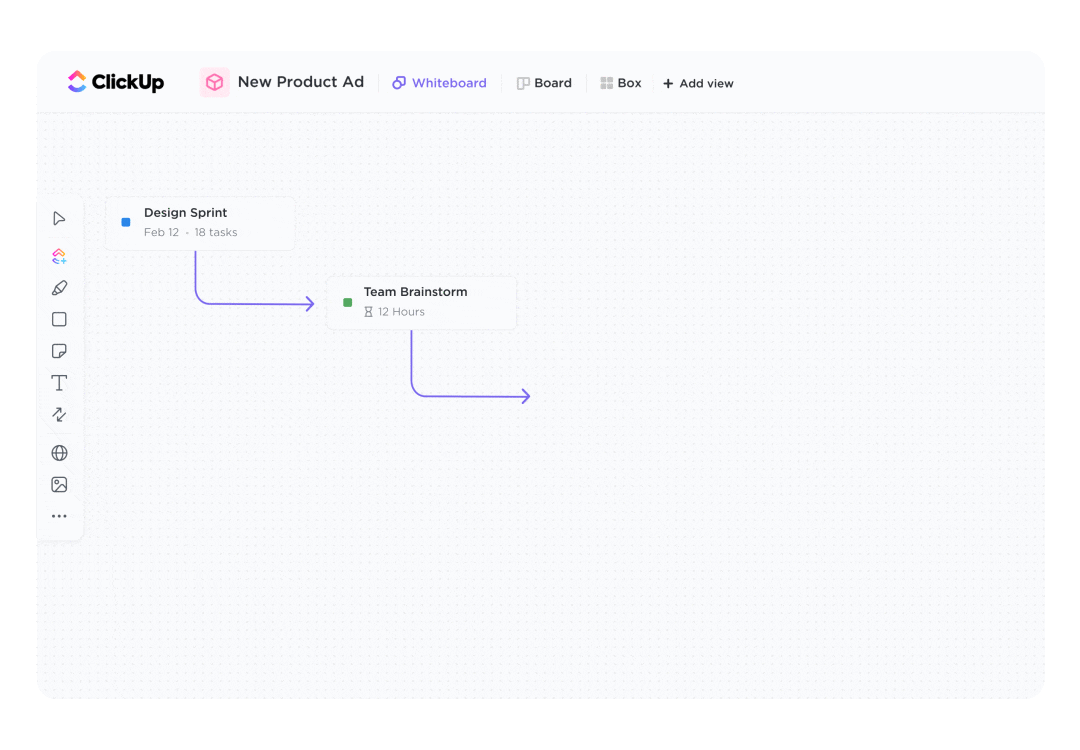
Easy scalability and higher resource availability
Picture a generic employee onboarding process automated with a workflow management system. And each time a new hire completes an onboarding task, the system automatically guides them to the next task in the process.
Now, imagine the headache it would be for the project manager to do that manually with every new hire. And guess what it would look like if the company onboarded dozens of employees every month. That’s how workflow management supports scalability.
Additionally, in automated workflows, tasks don’t entirely depend on any individual. For instance, the project manager doesn’t need to rely on their HR manager to onboard each employee. Instead, the workflow automation software will do the job, freeing up staff and other resources for tasks that do depend on their input.
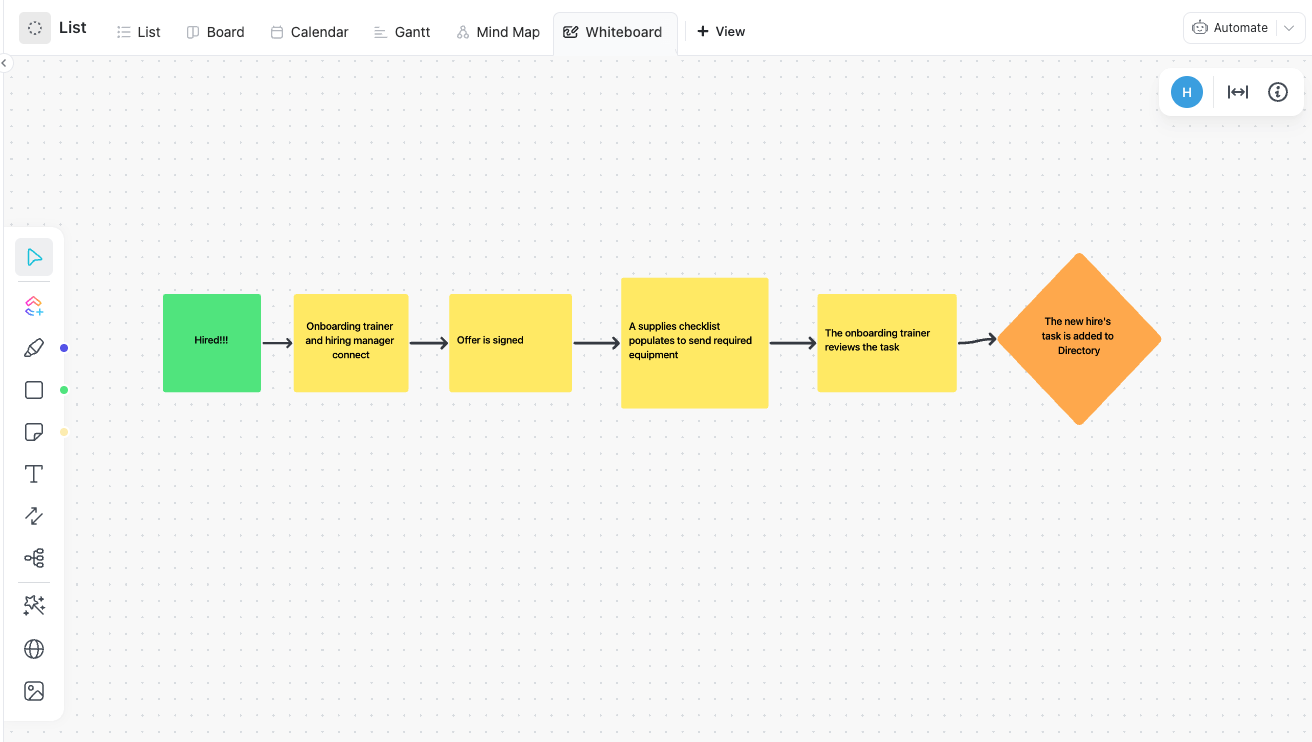
5 Workflow Management Tips
If we were to share with you our secrets to managing workflows, these would be the ones we’d share:
1. Use workflow management software
Workflow management systems help automate and manage multiple workflows effortlessly. But there are so many workflow apps out there that you must know what to look for in a workflow tool. And that’s why we put this must-have feature list together for you:
- Workflow automation: to execute repetitive tasks automatically because what would be the point of implementing workflows with software other than that? Example: automatically remind an assignee about a task’s due date approaching
- Deadline tracking: to control project deliverables and perform actions on due dates, such as filtering tasks by their delivery date, or dragging and dropping tasks in a timeline to adjust deadlines
- Performance management: to monitor your team’s productivity and process efficiency. And that’s possible with reports and process data, such as tasks completed or the total number of tasks worked on by team member
- Custom task statuses: that you can create and configure to meet your needs. For instance, a “Testing” status doesn’t make sense in a hiring workflow management operation, but it makes perfect sense in software development.
- Integrations: to manage work across various platforms, such as third-party software for communication, file-sharing and storage, schedule management, time tracking, and video conferencing. Example: host a conference call from a workflow management tool to discuss project details with remote teams
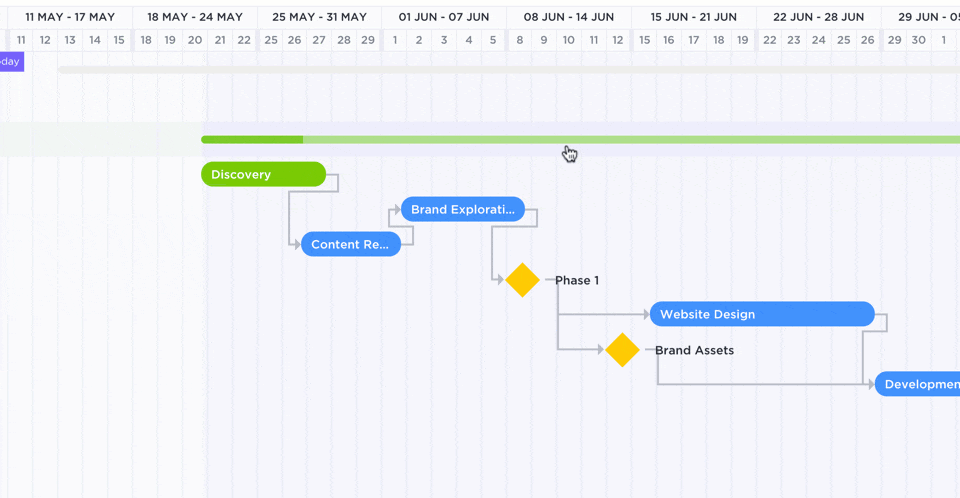
Check out ClickUp, our project management tool that excels in workflow automation!
2. Employ task and workflow templates
Imagine how tedious and inefficient it would be to create and assign the same task over and over again. Instead, you must select a workflow management software that allows you to:
- Create a task from a template
- Load a task from a template
- Add steps to a task from a template
- Save a task as a template (or create your own task templates)
But that’s not all you’ll need to do with templates in workflow management software. You must have the option to create your own workflow template. Here’s an example of ClickUp’s Process Flow Chart Template.
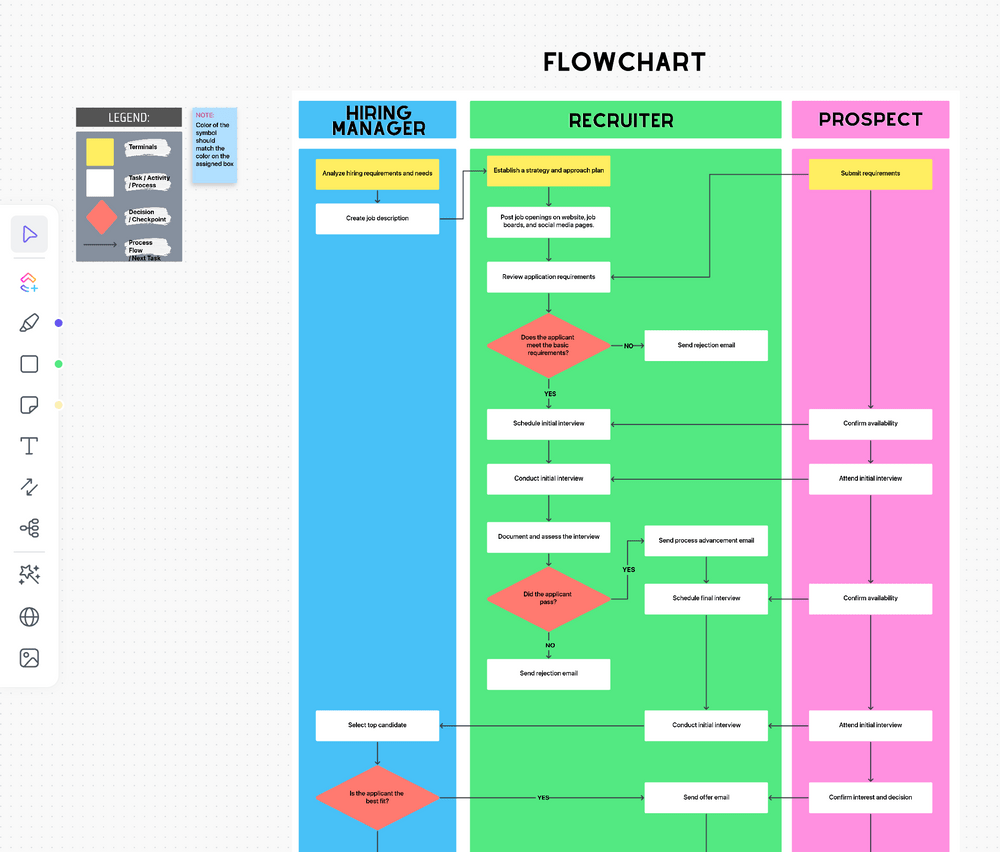
It’s a flowchart template containing the graphical elements you need to represent any process. On the right side, you can see a hiring process. Note how the process flows from one swimlane to another. Each swimlane symbolizes an intervenient and their responsibilities in the process.
3. Set project dependencies
Workflow management software isn’t efficient without project dependencies. For instance, tasks might depend on each other and documents. Make sure that the tool you select can link somehow related tasks.
Otherwise, you won’t be able to link orders to customers or bug reports to users. Your workflow management software must define the correct order between tasks. Workflow management dependencies include:
- Waiting-on dependencies: pointing to the tasks that must be completed before the current one initiates
- Blocking dependencies: for the tasks that can’t start unless the current one finishes
- Link-to dependencies: to connect tasks that are related to each other but don’t depend on one another
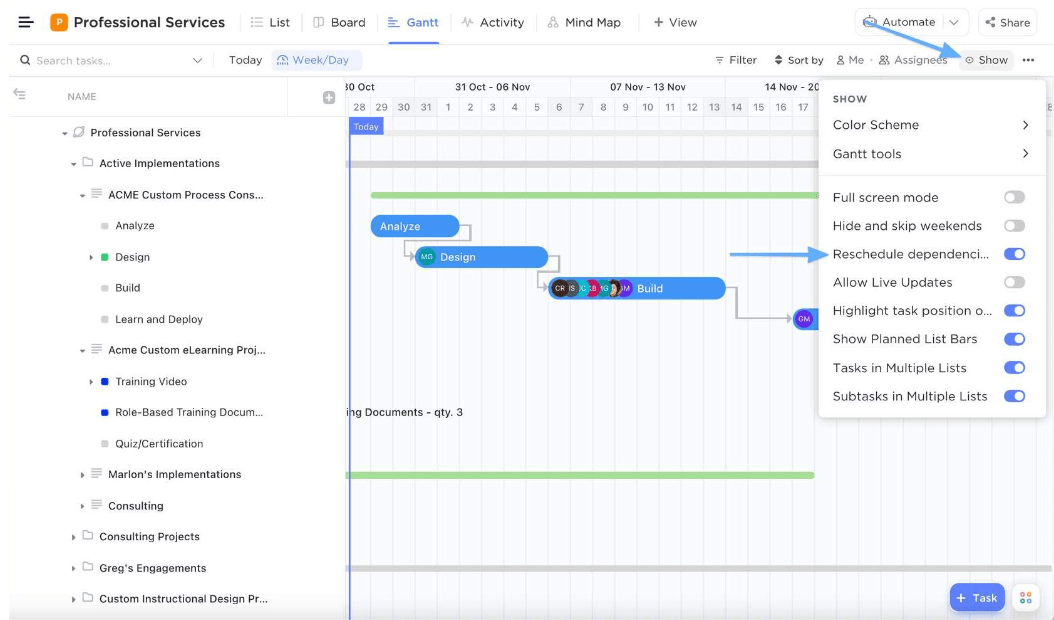
4. Check progress with a Gantt chart
To accurately keep up with the progress of workflow management systems, there’s nothing like a good old Gantt chart. It’s an instrument that shows your product plan visually in a project timeline. And it’s so versatile that you can do all of this with a Gantt chart view within your workflow management software like:
- Schedule tasks and automatically reschedule them by drag and drop
- Link tasks through dependencies
- Sort and prioritize tasks
- Highlight potential bottlenecks in the workflow
- Obtain progress percentages
📮ClickUp Insight: Only 7% of professionals depend on AI primarily for task management and organization. This could be because the tools are restricted to specific apps like calendars, to-do lists, or email apps.
With ClickUp, the same AI powers your email or other communication workflows, calendar, tasks, and documentation. Simply ask, “What are my priorities today?”. ClickUp Brain will search across your workspace and tell you exactly what’s on your plate based on urgency and importance. Just like that, ClickUp consolidates 5+ apps for you within a single, super app!
5. Support sprint planning
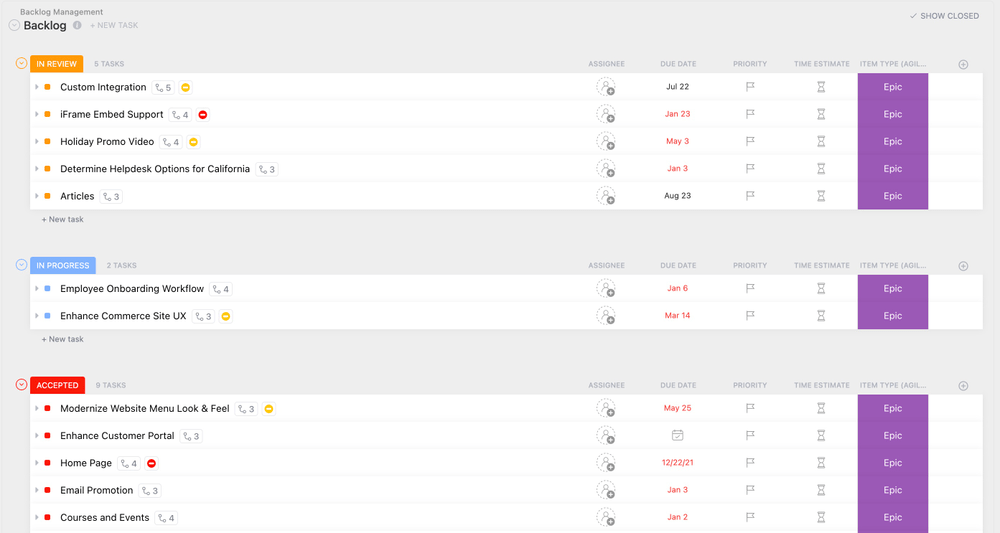
This last tip highlights a workflow template that might come in handy for you. We’re talking about the ClickUp Agile Scrum Management Template. And workflow management software that includes such a template is one giant step ahead of others.
Because you’re starting your spring planning meetings by creating sprints from a template is a weight off your shoulders. Besides, as the Gantt chart is a view of the workflow, it contains data from the workflow itself, such as tasks.
That’s why it’s important to use the best workflow management software with custom Gantt chart views that are easy to read and edit.
Bonus Workflow Management Templates
Make Your Workflow Management Work for You
Workflow management is highly effective for your team to achieve insane productivity levels. But without the workflow software, project management processes for tasks, team resources, and current availabilities become even harder.
If you use the right workflow management tool, project management becomes that much easier. Luckily, ClickUp provides a ton of customizations and automation templates to make your workflow management all the easier.

Choose from ClickUp’s 15+ customizable views for workflow management and detailed automation features to…well, automate processes so you don’t have to do the manual work!
Want to get in the driver’s seat?
Create your workspace today in ClickUp for absolutely free! Import tasks from other project management or workflow management software to get a better idea of how ClickUp can be customized to your liking.




